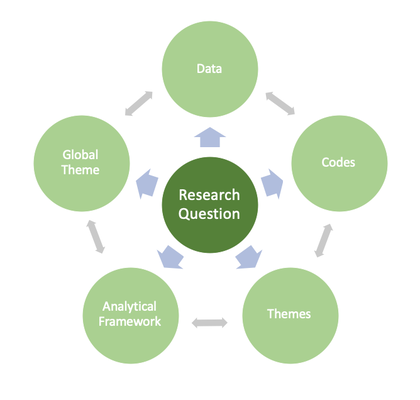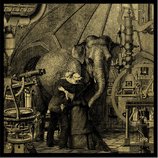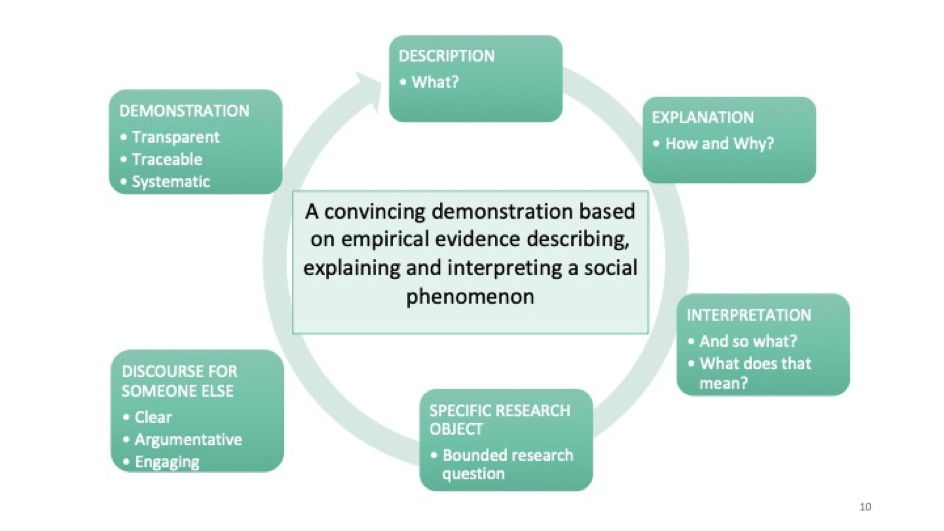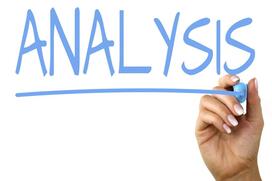 Whether you are a teacher teaching qualitative research methods or a student learning methodology, this blog post aims to help you answer the questions people learning how to code qualitative data always ask:
 When is it a good time to read this blog? (i.e. where does it fit in your learning curve?) = You have learned the basics of coding and you have started coding your material. You are in the process of reading your material over and over again. You have created some codes just to have to rename them the following day. Some of your themes start feeling like codes and some of your codes end up looking like themes. You wonder why you are so slow, what you must have missed, and expect others to be much more ‘efficient’, 'good' and 'quick' than you at doing all this. NOW is the time to read this post! Let me start by telling you something useful right away: a lot of things you think you are doing wrong is just the way the method works! In this blog post, I will give you some keys to understand and explain how the coding process happens in practice. By the end of this post, I hope you will be able to substitute the questions above (that often fuel your frustration and take down our self-esteem) with more constructive questions that will boost the quality of your analysis and help you make the most out of your data. But before going any further, let's define a few important words to make sure we understand each other:
What does coding look like in practice?To set our expectations regarding coding as a research practice, we need to understand what happens when we code:
Coding as a pattern finding activity
You need to engage this double process on a certain amount of data to enable patterns to appear within your data. To put it differently, this means:
Coding as an iterative process Coding is not a linear process with clear cut steps that you take one after the other. Coding is an iterative process. By iterative, I mean a process for arriving at a decision or a desired result by repeating rounds of analysis or cycles of operations. The objective is to get closer to the desired results with each repetition, or rather, with each iteration. To give you an example to illustrate what 'iteration' means, we can turn to how the word iteration is used in computer programming. In computer programming, iteration represents a process wherein a set of instructions or structures are repeated in a sequence a specified number of times or until a condition is met. When the first set of instructions is executed again, it is called an iteration. In the case of coding qualitative data, this means that you keep repeating the process of coding until you meet the criteria of good analysis. Exercise: How do university teachers experience funny cat videos on the Internet?I have prepared an exercise to enable you to experience and feel first-hand what I mean by coding qualitative data being an iterative and pattern-finding process. If you want to get the full experience, follow my guidelines and do it seriously (no cheating!). The exercise goes as follows. Let's say that you have conducted a series of interviews to answer the following research question: "How do university teachers experience funny cat videos on the Internet?" and that the first interview you have transcribed goes like this:  credit: Arria Belli credit: Arria Belli Excerpt from Interview 1: "The thing I really like about kitties is that you can cuddle them. I don’t have kids so basically my cats… they are my best friends. So when I watch them online it just reminds me of that feeling. I love it." The exercise goes as follows: Task 1: Write a few codes for this excerpt (3-5). Work as if you are still in the process of constructing a research question and you are inductively exploring your data to figure out what you can make out of it. While you are coding, think about the kind of things you find relevant and interesting in the transcript. Don't look at the other excerpts yet (no cheating!). Once you are done with Task 1, let's expand your material by adding excerpts from the transcripts of two other interviews, the interviews with Interviewer 2 and Interviewer 3. This is basically what happens when you start coding you material, you read a first interview and start coding it, not really knowing where it is going, and then you keep on by coding material from other sources. Task 2: Code the excerpts from Interview 2 and Interview 3. As for the first excerpt, pick a few codes for each excerpt. At this stage, don't touch the codes you have created for the first excerpt (no cheating, again!).
Task 3: Revisit/review/revise your coding of interview 1 based on your experience of reading and coding the excerpts from interview 2 and interview 3. You might notice that what you find relevant and interesting in the first excerpt changes after reading the other two excerpts. By more or less consciously comparing the content of the different interviews, your interpretation of what the first excerpt means evolves. Expanding the material enables you to perceive patterns across the transcripts and differences between them. For example, you might have created a code like "feelings" or "positive feelings" for the first excerpt, and then realise that there were feelings in all three interviews and you needed to change this code and be more precise about the kind of feelings that would best describe the experience of the interviewees in each excerpt. Also, interview 2 and 3 might have made you realise that the interviews were not only expressing different feelings, but also feelings about different things (cats, videos of cats, the humans producing such videos, the Internet...) and that these elements should also be accounted for in your coding etc. To conclude, this exercise aimed to show you that it is normal for you not to find 'the right codes' the first time you read your material. Again, this is just the way the method works! Don’t loose sight of your objectives!Have you ever heard about the idiom 'Missing the forest for the trees'? This expression refers to a situation when someone is too involved in the details of a problem to look at the situation as a whole... And this is what happens when you start asking yourself questions like "is it ok if I turn my code into a theme?", "is it normal that I start changing the labels of my codes after having constructed my themes?" etc. Remember that coding is only a mean to an end, the end is for you to produce knowledge as interesting and rigorous as possible! Don't lose the big picture of what your objective is (=producing a good analysis) and the nature of the process that is taking you there (=a pattern-finding iterative process). Once you are clear about these points, I believe that all the questions you ask yourself can be better answered by asking yourself the two following questions:
I hope this blog post has helped you unleash the coding force within you and that you are now ready to show the world your full coding potential 😉. References
Gibbs, G. R. (2007) Qualitative Research kit: Analyzing qualitative data. London, England: SAGE Publications Ltd. Saldana, J. (2009) The coding manual for qualitative researchers. Los Angeles, CA: SAGE. You can download the pdf of the blog post here.
0 Comments
As a student, have you ever been told that your work was “too descriptive” or that you needed to be “more analytical”?
So what is analysis and what does it take to produce good analytical work? What is analysis?Analysis is a process of transformation. Raw data and information do not have meaning per se. It is you, as researcher, who make meaning out of it, via the process of analysis. Analysis is a creative process. What you create through analysis is a new discourse about the world, which helps people perceive the world in a different way, understand things that they did not know or did not understand before reading your research. But how does it work? How does analysis make sense of the world, then? To summarise: by bringing focus, synthesising, naming, establishing patterns and relationships that will help other people in perceiving these patterns and relationships and thus understand the world differently. A good metaphor for analysis is the work of astronomers and other stargazing lovers who identified constellations. The sky is full of stars. And some people drew patterns in the sky, named these patterns and even created stories about the shapes thus formed. This way of perceiving the sky is passed down from generations to generations, taught and written in books. And people who learned them can’t help but seeing these patterns when they look at the stars. Here are two definitions of analysis taken from methodology handbooks: “Taken literally, ‘breaking up’ something complex into smaller parts and explaining the whole in terms of the properties of, and relations between, these parts” (Robson 2011: 412) “The process of bringing order to the data, organizing what is there into patterns, categories and descriptive units, and looking for relationships between them; ‘interpretation’ involves attaching meaning and significance to the analysis, explaining the patterns, categories and relationships…” (Brewer 2000: 105) These definitions highlight the double process involved in analytical work: - on the one hand, the breaking down and simplification of the inherently messy social world; - on the other hand, the building up of patterns between selected elements to produce a new (and synthetic) way of interpreting the world. In practical terms, the transcription of one hour of interview can take up to 40 pages. Thus, the transcription of 10 interviews amounts to 400 pages. You need to break down your material into manageable segments, and focus on certain elements and sacrifice others, in order to find out what is the most interesting knowledge you can produce out of this data. Does that mean that everything goes?Listing explicit criteria about what we need to do to produce a good analysis can help us ensure we are on tracks regarding our analytical goals. To sum it up: the objective of analysis is to produce a convincing demonstration based on empirical evidence describing, explaining and interpreting a social phenomenon. Criteria of analysis 101: The ‘wheel of analysis’In the schematic ‘wheel’ below, I unpack the definition above to make explicit a series of criteria to help you produce a good analysis: Let’s unpack further these criteria:
Each of us has natural strengths and weaknesses. For example, some of us will have no problem in expressing their argument with clarity but will struggle to establish clear boundaries to their research topic. Others will provide a rich interpretation but without demonstrating how they reached these conclusions. It is important to identify which dimensions of analysis are your weaknesses or which ones you usually tend to neglect, and work on them as a priority.
|
AuthorAudrey Alejandro Archives
March 2023
Categories
All
|










 RSS Feed
RSS Feed